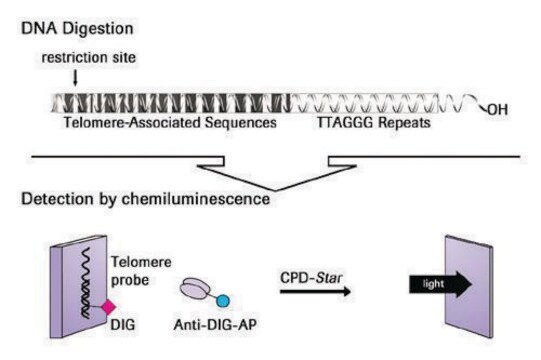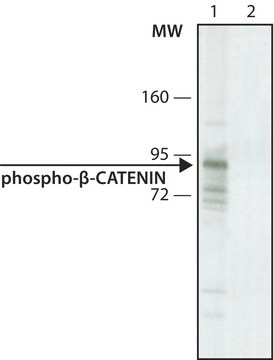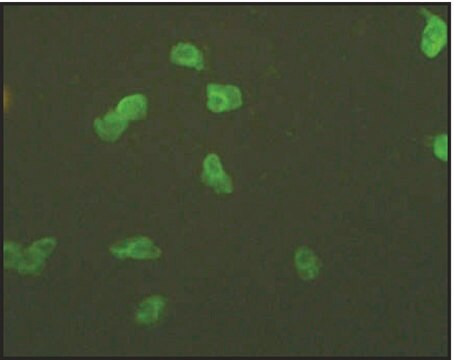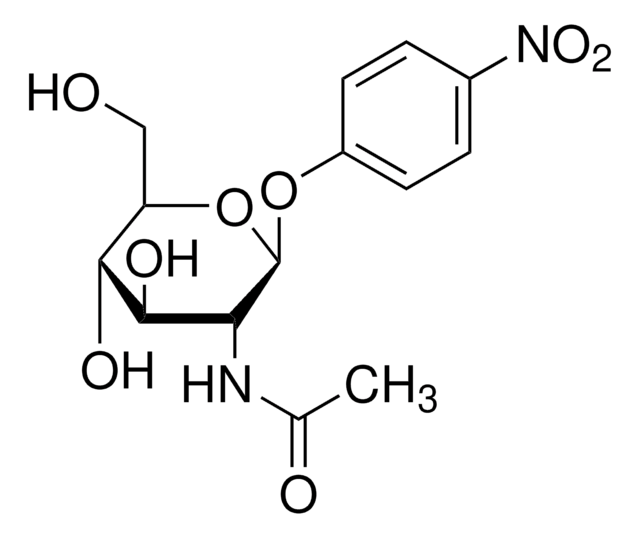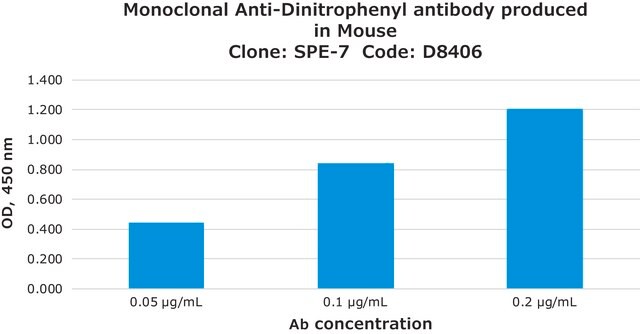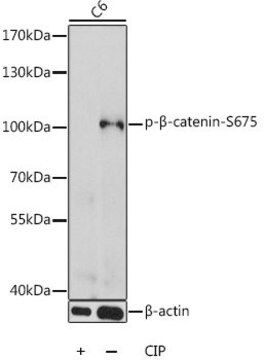C2363
Monoclonal Anti-phospho-β-Catenin (pSer33) antibody produced in mouse
clone BC-76, purified immunoglobulin, buffered aqueous solution
About This Item
WB
western blot: 5 μg/mL using total cell extracts of cultured HEK-293T cells treated with MG132
Productos recomendados
biological source
mouse
Quality Level
conjugate
unconjugated
antibody form
purified immunoglobulin
antibody product type
primary antibodies
clone
BC-76, monoclonal
form
buffered aqueous solution
species reactivity
human
technique(s)
microarray: suitable
western blot: 5 μg/mL using total cell extracts of cultured HEK-293T cells treated with MG132
isotype
IgM
UniProt accession no.
shipped in
dry ice
storage temp.
−20°C
target post-translational modification
phosphorylation (pSer33)
Gene Information
human ... CTNNB1(1499)
Categorías relacionadas
General description
Immunogen
Application
Biochem/physiol Actions
Physical form
Disclaimer
¿No encuentra el producto adecuado?
Pruebe nuestro Herramienta de selección de productos.
Elija entre una de las versiones más recientes:
Certificados de análisis (COA)
Lo sentimos, en este momento no disponemos de COAs para este producto en línea.
Si necesita más asistencia, póngase en contacto con Atención al cliente
¿Ya tiene este producto?
Encuentre la documentación para los productos que ha comprado recientemente en la Biblioteca de documentos.
Nuestro equipo de científicos tiene experiencia en todas las áreas de investigación: Ciencias de la vida, Ciencia de los materiales, Síntesis química, Cromatografía, Analítica y muchas otras.
Póngase en contacto con el Servicio técnico


